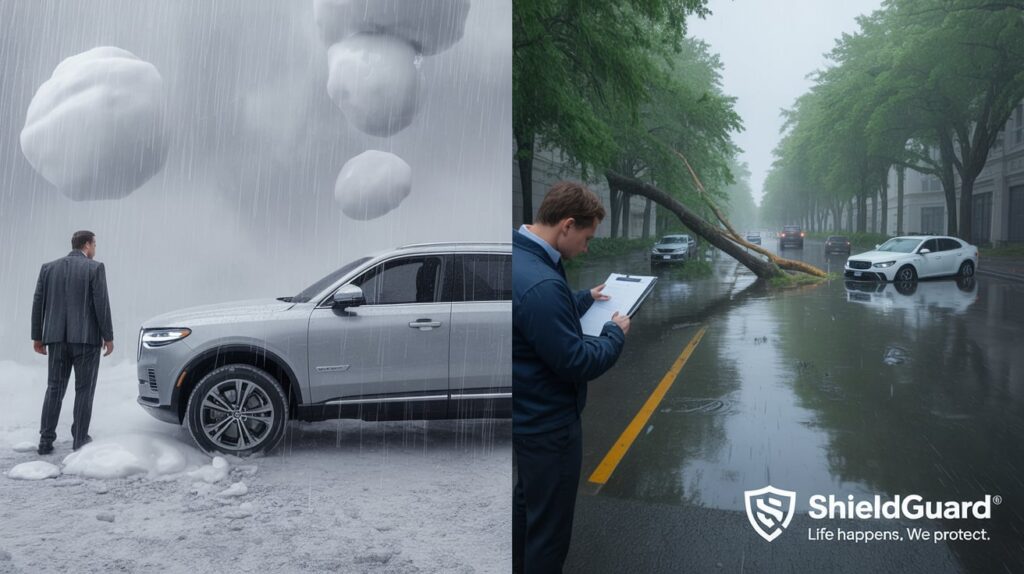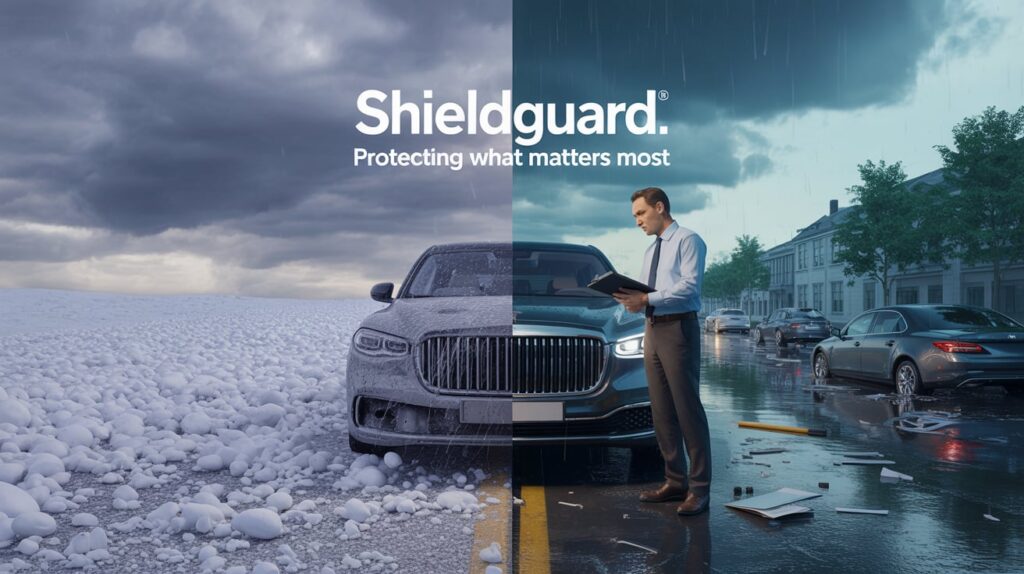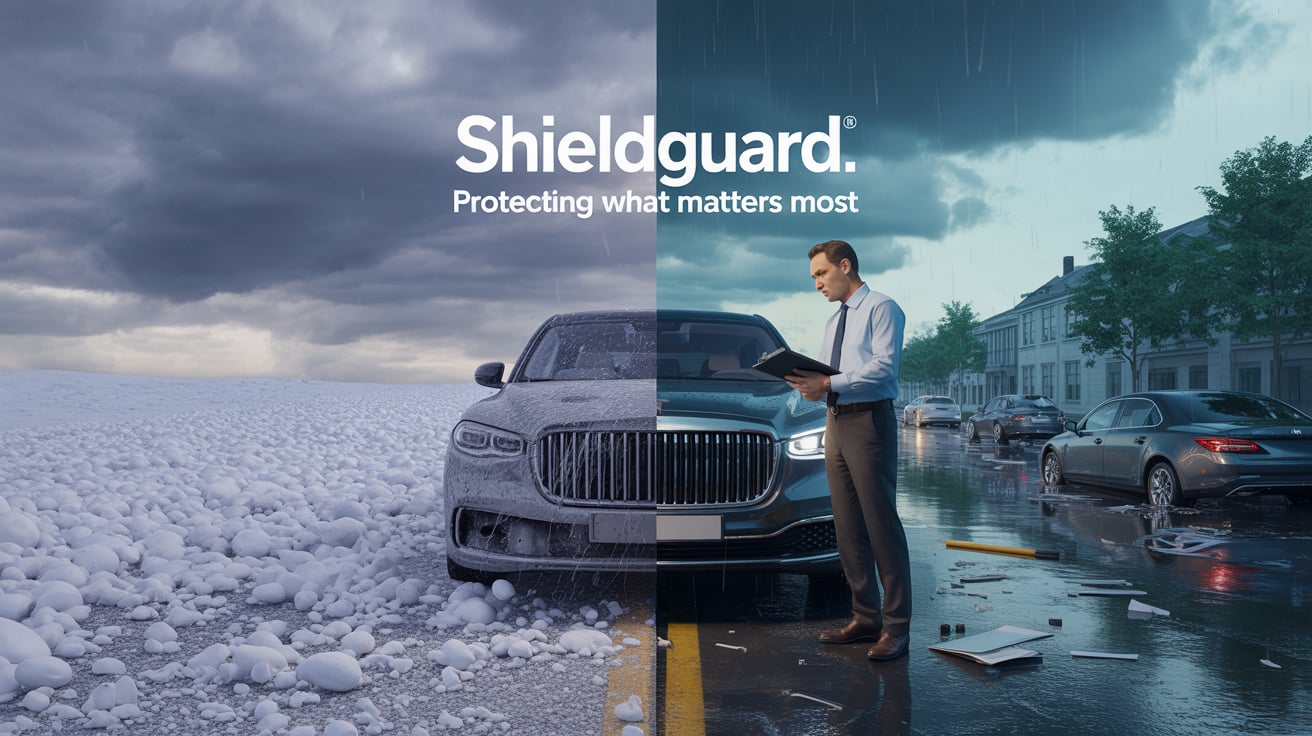How Extreme Weather Is Driving Up Your Auto Insurance Premiums
Auto insurance premiums have skyrocketed in recent years — rising 161% since 2008, according to the Official Data Foundation’s analysis of government figures. This surge far outpaces general inflation and is driven in part by the rising frequency and severity of extreme weather events.

In particular, hailstorm-related claims — a major driver of auto insurance losses — have increased fivefold over the same period, now costing insurers an estimated $10 billion annually. Scientific research links climate change to larger, more damaging hailstones, which can cause deeper dents and more costly repairs
Why Weather Is a Growing Factor in Auto Insurance Rates
From hail and hurricanes to floods and tornadoes, extreme weather is increasingly influencing insurance risk models. As the frequency and intensity of these events grow, insurers face mounting claims and escalating repair costs. To offset these expenses, providers are raising premiums — especially in regions with high exposure to natural disasters.
Insurance companies must justify rate increases to state regulators, demonstrating that they reflect expected claims and policy management costs. Weather is now a critical part of these calculations, not just on a broad geographic scale but also for individual policyholders.
A particularly destructive storm season can cost an insurer hundreds of millions across all types of coverage — including home, business, and auto insurance. For example, in Q3 of 2024, Allstate absorbed $1.2 billion in catastrophe-related losses, spanning over 100,000 claims caused by Hurricanes Beryl, Debby, Francine, and Helene.
The Many Ways Weather Damages Vehicles
Weather-related damage leads to both direct destruction and a higher likelihood of accidents. Some of the most common causes include:
- Hail: In 2023, hail accounted for 12% of all auto claims — up from just 3% in 2020, according to Insurify data journalist Matt Brannon. These claims are also 26% more expensive to repair than the average incident.
- Flooding: Storm surge and high waters can severely damage a car’s electrical and mechanical systems. Repairs often exceed the car’s value, resulting in total loss declarations.
- High Winds: Tornadoes, hurricanes, and powerful storms can knock down trees, fling debris, or even toss vehicles — causing extensive damage.
- Poor Driving Conditions: Wet, icy, or snowy roads increase accident risk. Brannon notes that wet pavement is a factor in 15% of crashes, while snow and sleet contribute to 4%.

What’s more, regions not typically prone to severe weather are now experiencing stronger storms. Drivers unfamiliar with hazardous conditions like snow or high winds are more likely to crash, further increasing claims.
Other Factors Pushing Auto Insurance Costs Higher
While extreme weather is a key contributor, it’s not the only reason auto insurance rates are climbing. The CCC Intelligent Solutions Q1 2025 Crash Course Report identifies five additional factors:
- Aging Vehicles: Consumers are holding onto older cars due to high prices and financing costs for new ones.
- More EVs and Hybrids: These vehicles have complex systems and expensive components, making repairs pricier.
- Advanced Safety Tech: Features like adaptive cruise control and lane-keeping assist are expensive to fix when damaged.
- Rising Medical Costs: Injury claims are becoming more expensive. In 2023, the average bodily injury claim reached $26,501, up from $20,925 in 2020.
- Higher Total Loss Rates: Repairing newer and older vehicles alike is becoming so costly that more are being declared total losses.
These factors all amplify the financial pressure on insurance companies, especially when compounded by more frequent storms and natural disasters.
Where Auto Insurance Costs Are Rising the Most
Drivers in weather-prone states are seeing the biggest increases in premiums. For instance, Minnesota saw a 58% spike in rates in 2024 alone after enduring multiple severe storms — including some with record-breaking 6-inch hailstones.
According to NOAA data from the National Centers for Environmental Information, the South, Central, and Southeast U.S. have faced the highest cumulative weather-related damages from 1980 to 2024. The top three states for catastrophic weather losses are Florida, Texas, and Louisiana — all frequent targets of hurricanes, floods, and tornadoes.
These regions routinely face billion-dollar weather events, which insurers factor into their pricing models.

How Much Have Auto Insurance Rates Increased?
The Bureau of Labor Statistics reports that as of April 2025, auto insurance costs have risen 6.4% year-over-year and are 30% higher than just two years ago.
Brannon points to inflation and climate-driven insurer losses as key forces behind these increases. “Climate change brings more frequent and severe storms that result in more claims and costlier repairs,” he explains. “When insurers pay more in claims, they pass those costs onto policyholders.”
Travis Hodges, managing director at digital insurance platform VIU by HUB, agrees: “Unpredictable weather events, combined with increased repair costs and longer repair timelines, are all fueling this surge in premiums.”
What Types of Auto Insurance Cover Weather-Related Damage?
Not all policies automatically cover weather-related damage, but several types of coverage can protect you depending on the situation:
Comprehensive Insurance
Covers non-collision incidents like hail, flooding, falling trees, and flying debris. This is optional but highly recommended in storm-prone areas. A deductible applies before coverage kicks in.
Collision Insurance
Covers damage to your car if you crash due to weather (e.g., skidding on wet roads). Also optional and subject to a deductible.
Liability Insurance
Pays for damage or injury you cause to others. While weather can contribute to an accident, liability usually doesn’t cover your own vehicle — only the damage to others.
Gap Insurance
Covers the difference between your car’s value and your remaining loan balance if your car is totaled in a storm. Optional, and usually only available for newer vehicles.
Weather and Insurance Are Now Tied Together
As climate change fuels more powerful and frequent storms, auto insurance is becoming more expensive — especially in regions regularly impacted by extreme weather. Combined with rising medical bills, costlier vehicle technology, and more total loss declarations, insurers are facing historic levels of claims.
The result? Higher premiums for nearly everyone.
If you live in a storm-prone area or drive an older or electric vehicle, now’s the time to review your coverage. Consider adding or maintaining comprehensive and collision policies, and make sure you have adequate liability protection.

Conclusion
The rising cost of auto insurance is no longer just about your driving record or the type of car you own — it’s increasingly tied to the unpredictable and intensifying forces of nature. As climate change fuels more destructive storms, insurers are grappling with soaring repair bills and higher claim volumes. From hailstorms to hurricanes, extreme weather is now a major risk factor in determining your premium.
At the same time, advancements in vehicle technology, escalating healthcare costs, and aging car fleets are compounding the problem. Together, these trends are creating a perfect storm for rising insurance rates.
For drivers, the takeaway is clear: review your policy carefully, make sure you have the right coverage for weather-related risks, and take steps to minimize your exposure. As extreme weather becomes the new normal, staying informed and protected is more important than ever.




2 thoughts on “Why Your Auto Insurance Premiums Are Rising: The Cost of Extreme Weather”